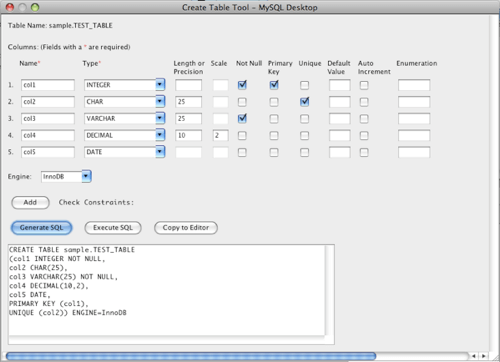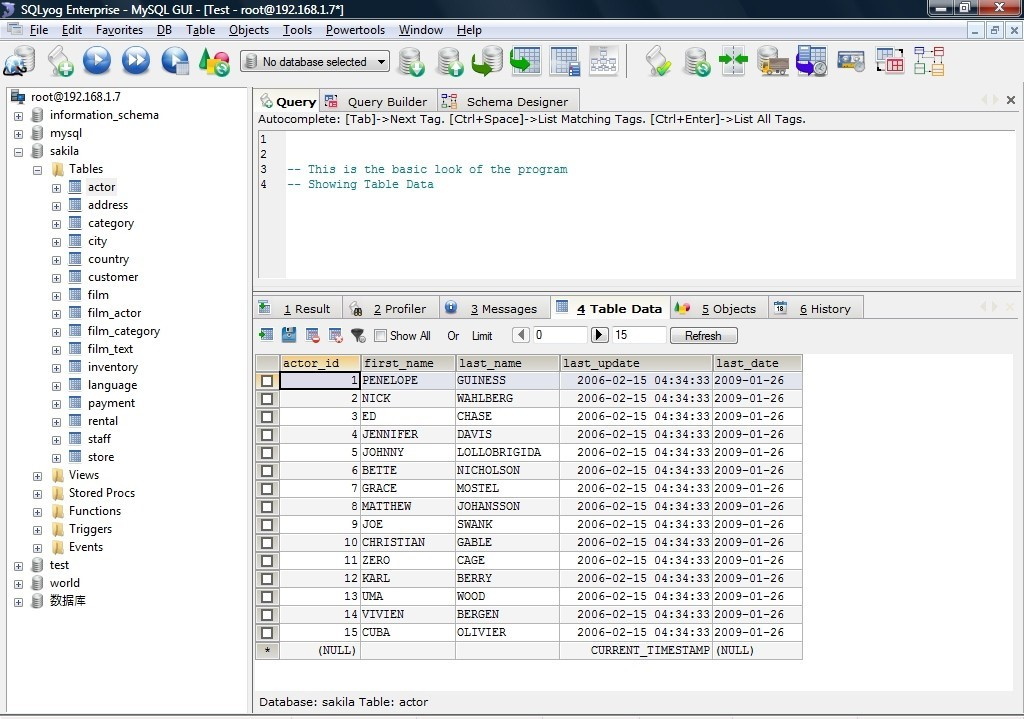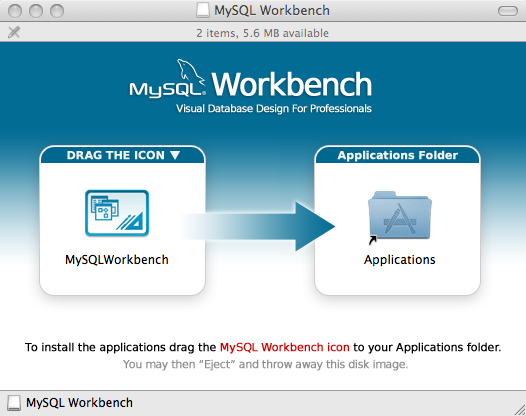

Subscribe to the Retool monthly newsletter Navicat for PostgreSQL pricing consists of three tiers: non-commercial ($119), standard ($199), and enterprise ($299).

#Mysql gui for mac trial
The Navicat trial is only available for 14 days, and you have to buy licenses to be able to work with PostgreSQL or MySQL. Cost may not be as much of an issue for a business looking to maximize their database users’ efficiency, but it could be frustrating if you’re an individual looking for a simpler query tool. The main drawback to Navicat is the price. One of the neat things about Navicat is that it gives the user a choice of dark or light theme from the start (for those dark mode die hards out there). The aesthetic of Navicat’s GUI is slicker and more modern than pgAdmin’s.

Navicat also comes with a powerful data modeling tool, which lets you visualize database structures and design schemas. This cloud friendliness extends to how easy it is to connect to data sources, like cloud databases, local flat files, or SSH tunneling and SSL. You can easily improve team productivity for the SQL your team writes via Navicat’s job scheduler.Īn add-on feature called Navicat Cloud also allows for Navicat SQL-specific team collaboration.

It is easy to get up and running and has multiple features which make it a great choice for team collaboration. Installation of Navicat requires no more than three lines of terminal commands in Ubuntu. Unlike pgAdmin, for example, Navicat supports multiple SQL dialects, like MongoDB, MySQL, and PostgreSQL. Navicat is a paid tool and isn’t open-source, so it comes with many more features than the typical open-source tool.
#Mysql gui for mac software
Navicat is not as popular as PgAdmin but definitely comes with many of the features you would expect from software that makes talking to databases easier. Managing multiple servers, databases, and the usage that comes with them, is definitely a more advanced terminal skillset. Running a Postgres GUI as a web application from your terminal is something that newcomers should not be expected to figure out from the ground up. The main drawback of PgAdmin is installation barriers, especially for SQL developers who aren’t experts at the command line. They cover most of what you’d want to accomplish when writing queries that need maintenance friendly white space. PgAdmin’s SQL Editor provides an extensive list of useful shortcuts for quality of life improvements. SQL Query Editors are where most Postgres users spend their time when manipulating data. Admittedly, this is a feature more targeted at the Database Administrator (DBA) level than the Analyst or Engineer level, which involves more SQL than production database management. This is convenient if you’re running Postgres as a distributed database across multiple servers, as you can include PgAdmin on each. PgAdmin runs as a web application, meaning it can be deployed on any server, including your computer. You can configure it to run on any cloud server and then access it from all of the major operating systems Windows, Linux, and MacOS. PgAdmin’s greatest strength is that anybody can use it, anywhere. PgAdmin is on it’s fourth major version and supports all of PostgreSQL’s features while also being open-source. Database objects are immediately easy to find on a left hand menu. PgAdmin is one of the most popular GUIs available for Postgres users. This post will review the best PostgreSQL GUI tools available for querying, visualizing, and analyzing your Postgres data, as well as remotely accessing and navigating database servers. PostgreSQL ships with a built-in CLI called psql, but some don't prefer to write queries via the command line. It’s the second most popular database among developers overall, and almost 70% say they love working with it. If you’re a modern web developer, chances are you’ve interacted with PostgreSQL (“Postgres” for short).


 0 kommentar(er)
0 kommentar(er)
